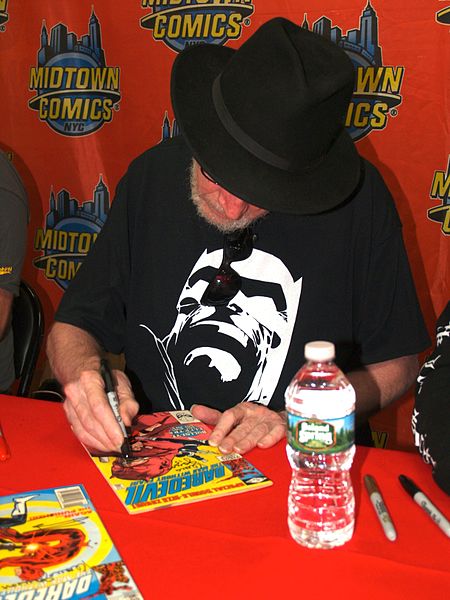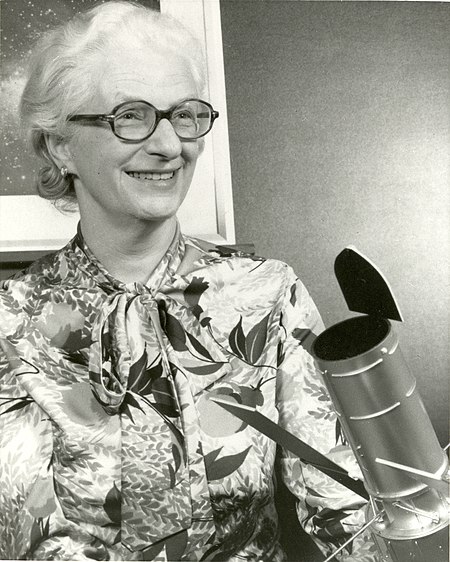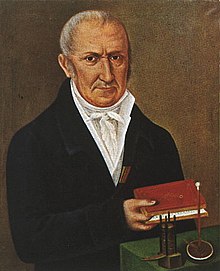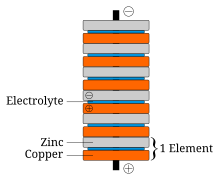Alessandro Volta
| |||||||||||||||||||||||||||||||||||
Read other articles:

2016年美國總統選舉 ← 2012 2016年11月8日 2020 → 538個選舉人團席位獲勝需270票民意調查投票率55.7%[1][2] ▲ 0.8 % 获提名人 唐納·川普 希拉莉·克林頓 政党 共和黨 民主党 家鄉州 紐約州 紐約州 竞选搭档 迈克·彭斯 蒂姆·凱恩 选举人票 304[3][4][註 1] 227[5] 胜出州/省 30 + 緬-2 20 + DC 民選得票 62,984,828[6] 65,853,514[6] 得…

Duke of Lorraine and Bar from 1625 to 1675 Charles IVDuke of Lorraine and BarReign1 December 1625 – 19 January 1634PredecessorFrancis IISuccessorNicholas IIReign1 April 1634 – 18 September 1675PredecessorNicholas IISuccessorCharles VBorn(1604-04-05)5 April 1604Nancy[1]Died18 September 1675(1675-09-18) (aged 71)Allenbach[1]Spouse Nicolette of Lorraine (m. 1621; died 1657) Béatrice de Cusance (m.&#…

Welsh soprano DameGwyneth JonesDBEGwyneth Jones in Paris, 2002Born (1936-11-07) 7 November 1936 (age 87)Pontnewynydd, Monmouthshire, Wales, UKEducation Royal College of Music Accademia Musicale Chigiana OccupationDramatic soprano Dame Gwyneth Jones DBE (born 7 November 1936) is a Welsh dramatic soprano, widely regarded as one of the greatest Wagnerian sopranos in the second half of the 20th century. Early life and career This section of a biography of a living person needs additional citati…

Juvisy-sur-Orge L'observatoire astronomique de Camille Flammarion. Blason Logo Administration Pays France Région Île-de-France Département Essonne Arrondissement Palaiseau Intercommunalité Métropole du Grand Paris Maire Mandat Lamia Bensarsa Reda (DVD) 2020-2026 Code postal 91260 Code commune 91326 Démographie Gentilé Juvisien Populationmunicipale 18 424 hab. (2021 ) Densité 8 225 hab./km2 Géographie Coordonnées 48° 41′ 26″ nord, 2° 22′&#…

Gerhard Schöpfel Surnom « Gerd » Naissance 19 décembre 1912Erfurt Décès 17 mai 2003 (à 90 ans)Bergisch Gladbach Origine Allemagne Allégeance Reich allemand Arme Luftwaffe (Wehrmacht) Unité JG 26, 4 & 6 Grade Major Années de service 1936 – 1945 Commandement 9./JG 26, III./JG 26, JG 4, JG 6 Conflits Seconde Guerre mondiale Faits d'armes Drôle de guerreBataille de FranceBataille d'AngleterreFront OuestDéfense du Reich Distinctions Croix de chevalier de la croi…

يفتقر محتوى هذه المقالة إلى الاستشهاد بمصادر. فضلاً، ساهم في تطوير هذه المقالة من خلال إضافة مصادر موثوق بها. أي معلومات غير موثقة يمكن التشكيك بها وإزالتها. (مارس 2016) هذه قائمة فوربس للمليارديرات 2008 منشورة من قبل مجلة فوربس الأمريكية لسنة 2008، و هذه المجلة تجمع مليارديرات الأ…

القوة البحرية لجيش الجمهورية الإسلامية الإيرانية الدولة إيران الإنشاء 1923 - حتى الآن النوع قوات بحرية الدور الحرب العسكرية البحريةحماية السواحل البحرية الإيرانية الحجم 18,000 جزء من جيش الجمهورية الإسلامية الإيرانية المقر الرئيسي طهران، إيران الاشتباكات الحرب العراقية ا�…

اقتُرح دمج محتويات هذه المقالة مع المعلومات الموجودة في جزيرة أسينشين. (ناقش) كنيسة سانت ماري في جورجتاون. المسيحية هي الديانة السائدة في جزيرة أسينشين، حيث أن 100% من السكان الجزيرة البالغ عددهم 880 نسمة يعتنقون الديانة المسيحية والغالبيَّة العظمى منهم من أصول أوروبيَّة.[1]…

German footballer (born 1993) Nico Schulz Schulz with Germany in 2019Personal informationFull name Nico SchulzDate of birth (1993-04-01) 1 April 1993 (age 31)Place of birth Berlin, GermanyHeight 1.81 m (5 ft 11 in)[1]Position(s) Left-backYouth career BSC Rehberge Berlin2000–2010 Hertha BSCSenior career*Years Team Apps (Gls)2010–2012 Hertha BSC II 23 (0)2010–2015 Hertha BSC 92 (2)2015–2017 Borussia Mönchengladbach 13 (1)2017–2019 1899 Hoffenheim 57 (2)2019�…

Circle of latitude 50°class=notpageimage| 50th parallel north Map all coordinates using OpenStreetMap Download coordinates as: KML GPX (all coordinates) GPX (primary coordinates) GPX (secondary coordinates) The 50th parallel north is a circle of latitude that is 50 degrees north of the Earth's equatorial plane. It crosses Europe, Asia, the Pacific Ocean, North America, and the Atlantic Ocean. At this latitude the sun is visible for 16 hours, 22 minutes during the summer solstice and 8 hours, 4 …

1930 film Anybody's WomanTheatrical release posterDirected byDorothy ArznerScreenplay byZoe AkinsDoris AndersonGouverneur MorrisStarringRuth ChattertonClive BrookPaul LukasHuntley GordonVirginia HammondTom PatricolaJuliette ComptonCinematographyCharles LangEdited byJane LoringMusic byKarl HajosProductioncompanyParamount PicturesDistributed byParamount PicturesRelease date August 15, 1930 (1930-08-15) Running time80 minutesCountryUnited StatesLanguageEnglish Anybody's Woman is a 19…

2007 Dundee City Council election ← 2003 3 May 2007 (2007-05-03) 2012 → All 29 seats to Dundee City Council15 seats needed for a majority First party Second party Third party Leader Ken Guild Kevin Keenan Derek Scott Party SNP Labour Conservative Leader's seat The Ferry Strathmartine The Ferry Last election 11 seats, 34.1% 10 seats, 34.1% 5 seat, 14.9% Seats before 11 10 5 Seats won 13 10 3 Seats after 13 10 Seat ch…

Russian writer and activist (1828–1910) Tolstoy and Lev Tolstoy redirect here. For other uses, see Tolstoy (disambiguation) and Lev Tolstoy (disambiguation). In this name that follows Eastern Slavic naming customs, the patronymic is Nikolayevich and the family name is Tolstoy. Leo TolstoyЛев ТолстойTolstoy in 1908Born(1828-09-09)9 September 1828Yasnaya Polyana, Tula Governorate, Russian EmpireDied20 November 1910(1910-11-20) (aged 82)Astapovo, Ryazan Governorate, Russian Emp…

Multiple comic book series DaredevilThe cover of the first issue of Daredevil (April 1964) features the superhero's debut.Art by Bill Everett.Publication informationScheduleVariedFormatOngoing seriesGenreSuperheroPublication date1964 – presentNo. of issues(vol. 1): 381 (#1–380 plus #−1) and 10 Annuals(vol. 2): 119(vol. 1 cont.): 13(vol. 3): 37 (#1–36 plus #10.1) and 1 Annual (vol. 4): 21 (#1–18 plus #0.1, #1.50 and 15.1)(vol. 5): 28 and 1 Annual(vol. 1 cont.): 18(vol. 6): 36 and 1…

County in Georgia, United States County in GeorgiaDodge CountyCountyDodge County Courthouse in EastmanLocation within the U.S. state of GeorgiaGeorgia's location within the U.S.Coordinates: 32°10′N 83°10′W / 32.17°N 83.17°W / 32.17; -83.17Country United StatesState GeorgiaFounded1870; 154 years ago (1870)Named forWilliam E. DodgeSeatEastmanLargest cityEastmanArea • Total503 sq mi (1,300 km2) • Land…

NASA/ESA space telescope launched in 1990 Hubble redirects here. For the astronomer, see Edwin Hubble. For other uses, see Hubble (disambiguation). Hubble Space TelescopeSeen in orbit from the departing Space Shuttle Atlantis in 2009, flying Servicing Mission 4 (STS-125), the fifth and final Hubble mission.NamesHST HubbleMission typeAstronomyOperatorSTScICOSPAR ID1990-037B SATCAT no.20580Websitenasa.gov/hubble hubblesite.orgspacetelescope.orgMission duration34 years, 1 month, 21 d…

Motorway in Kent, England This article is about the motorway in England. For the motorway in the Republic of Ireland, see N20 road (Ireland). M20M20 highlighted in blueRoute informationPart of E15 Maintained by National HighwaysLength50.6 mi (81.4 km)Existed1971–presentHistoryOpened: 1960 (as A20(M))Renumbered: 1971Completed: 1991Major junctionsWest endSwanleyMajor intersections J1 → M25 motorway J3 → M26 motorwayEast endFolkestone LocationCountryUnited KingdomCoun…

城ヶ平山標高 446.3 m所在地 日本富山県中新川郡上市町位置 北緯36度39分59秒 東経137度24分9秒 / 北緯36.66639度 東経137.40250度 / 36.66639; 137.40250座標: 北緯36度39分59秒 東経137度24分9秒 / 北緯36.66639度 東経137.40250度 / 36.66639; 137.40250 の位置 北緯36度27分54秒 東経137度16分45秒 / 北緯36.46500度 東経137.27917度 / 36.46500; 137.27917 (城ヶ�…

Mass per unit volume of granular matter In materials science, bulk density, also called apparent density, is a material property defined as the mass of the many particles of the material divided by the bulk volume. Bulk volume is defined as the total volume the particles occupy, including particle's own volume, inter-particle void volume, and the particles' internal pore volume.[1] Bulk density is useful for materials such as powders, granules, and other divided solids, especially used i…

Permaisuri Xiao Gong Ren, (Chinese: 孝恭仁皇后烏雅氏; Manchu: Hiyoošungga Gungnecuke Gosin Hūwanghu) (1660 - 1723) adalah selir dari Kaisar Kangxi dan ibu dari Kaisar Yongzheng. Ayahnya adalah seorang Letnan Kolonel, Wei Wu (Chinese: 威武). Dia berasal dari Klan Uya, Pasukan Kesatuan Bendera Kuning. Permaisuri Xiao Gong Ren (孝恭仁皇后)Ibu Suri RenshouPermaisuri Xiao Gong RenIbu Suri Dinasti QingBerkuasa20 Desember 1722 - 25 Juni 1723PendahuluIbu Ratu, Ibu Suri Renxian Ibu Suci,…







